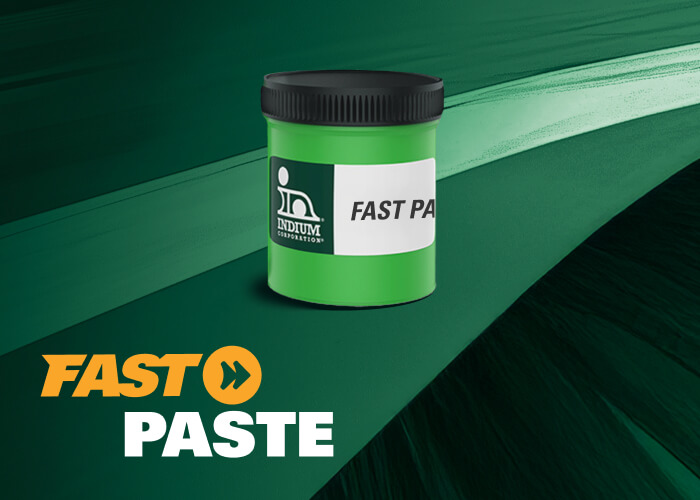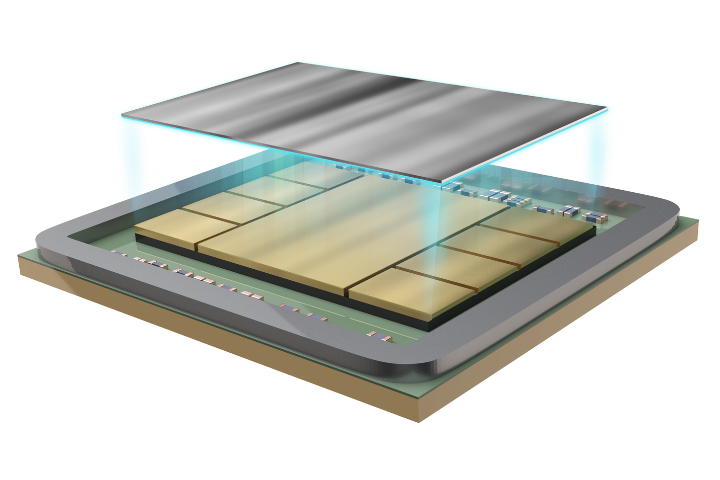I mentioned in a previous a blog posting that the primary driver for halogen-free electronics is ostensibly environmental, but that the confusion about “which halogens and which molecules and what level?” has seemingly decoupled the laudable desire for an improved environment from the reality and made it more of a marketing tool. All this notwithstanding, there remain some instances where the performance of the final product itself can be directly impacted by the presence of halogens, usually as ionic halides. This is the reason why Indium Corporation recently developed what appears, at first glance, to be an odd combination: a high-Pb (high-lead) alloy halogen-free die-attach solder paste, Indium9.72-HF.
The halogen-related failure mode for die-attach solder pastes is the corrosion of wirebond pads on the topside ofPower Semiconductor die which are soldered to the leadframe with halogen-containing solder paste. Many manufacturers producing high volumes of identical power devices may also use die-attach (sometimes called “soft solder die attach”, SSDA) wire to attach the die to the leadframes in a fluxless process, but many manufacturers prefer the inherent flexibility of a solder paste-based process for medium mix / medium volume applications.
Long term blog readers will recall that I did a posting on solderspatter (a.k.a. soldersplatter or soldersplash), and that it can be caused by bubbles of solvent vapor or moisture outgassing from solder paste deposits during reflow. In bursting, the tiny flux droplets or solder particles from the surface of the bubble can be propelled quite a distance (several feet). While solder on wirebond pads is clearly a failure from a reliability viewpoint, certain wirebond pad metallizations may also be subject to corrosion from flux. A poorly maintained reflow oven may also drip flux condensate (usually in the exit – cooling – zone), and this too can be a cause of organic materials on wirebond pads.
As long as the bondwire is gold, and wirebond pads are covered in a uniform layer of gold, there is no problem (as long as the flux residue is washed off) since gold is unreactive, even in corrosive environments. Aluminum (Al)or aluminum/silicon (Al/Si) bondpads, however, are potentially reactive. Halogenated materials, such as fluxes and overmolding compounds may react with them to either reduce the wirebond pull strength and/or increase the wirebond junction resistance, leading to localized heating andsubsequent thermal-related joint failure.Even covalently-bonded (C-X, where X is a halogen) materials may dissociate at high temperatures: which is how the banned brominated flame retardants work, of course.
The biggest danger of halogenated flux corroding wirebond pads is when:
1/ Completed assemblies (between the reflow process and the cleaning process) are leftfor a long time before cleaning; particularly if they are exposed to high humidity (high %RH) before cleaning.
2/ The cleaning process is inadequate: either due to poor selection of the cleaning solution, or poor bath maintenance, or inadequate “scrubbing” energy being imparted to the surface to be cleaned, or simply if inadequate time is allowed for cleaning.
Note that even optimizing 1/ and 2/ may still lead to bondpad corrosion.
The Indium9.72-HF paste is available in both type 3 and 4 powder, in the standard high-Pb alloys, Indalloy 151 (92.5Pb/5Sn/2.5Ag) and Indalloy 163 (95.5/2Sn/2.5Ag), and for larger die that need a higher reliability joint, we also offer the Indalloy 164 (92.5Pb/5In/2.5Ag). A Product Datasheet is available for download, of course.
Cheers!Andy



